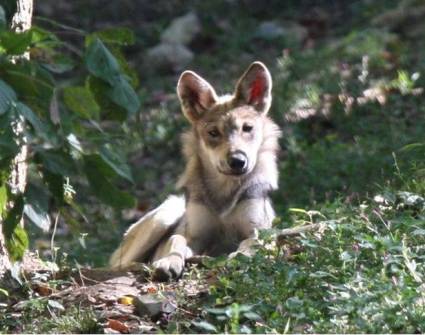04
Apr
In the News: Mexican Gray Wolf Recovery Program Turns 15

PHOENIX, Ariz. – Fifteen years ago Friday, in the wake of a blizzard, the first group of 11 captive-bred Mexican gray wolves was released in Arizona’s Apache National Forest. Today, the recovery program population has grown to 75, but advocates say much higher numbers are needed to ensure the long-term survival of the “lobo.”
Eva Sargent, Southwest program director with Defenders of Wildlife, warned that the wolves are facing a “genetic crisis” because there are only three breeding pairs. She said genetic diversity helps wolves adapt to changes in climate or food supply.
“When you don’t have a lot of diversity, you’re more susceptible to various diseases,” she said. “In this case, we already have scientific evidence that the Mexican wolves are having lower litter sizes, fewer pups.”
Defenders of Wildlife is calling for an emergency rescue plan for the endangered animal, starting with expanding the gene pool by releasing into the wild more of the 300 Mexican wolves currently being held in zoos and breeding centers.
The rescue plan also calls for establishing additional ranges for the wolves. Sargent says keeping the current small population in one area puts the entire recovery program at risk.
“That’s all your chickens in one basket. When you see huge wildfires like we’ve had the last two years, those kinds of things threaten your population when they’re all in one place. So does disease. A disease epidemic could come in and wipe the entire population out.”
Sargent said the U.S. Fish and Wildlife Service must finally complete an update of its Mexican wolf recovery plan in order to answer questions such as how many wolves are needed, and where.
“The recovery plan is 30 years out of date, and they are now in their third attempt to update it. When the recovery plan was new, in 1982, “Tron” was the top movie,” she said.
Most of the opposition to wolf recovery has come from ranchers. Sargent agreed that their concerns about the program are valid.
“Wolves don’t eat very many cows, but if they’re your cows, that’s a real problem,” she said. “But there’s a lot of ways that ranchers are learning to coexist with wolves and there’s a lot of programs to help them from various groups.”
Events marking the 15th anniversary of the wolf recovery program are being held in Flagstaff, Pinetop and Albuquerque, N.M.
*****
This story appeared on the Public News Service website on March 28, 2013.
You can listen to the audio broadcast of this story here.
*****
As Ms. Sargent noted in this interview, the Recovery Plan is sorely out of date.
The link below will take you to an article that tells the history of the planning process, as well as resources for you to take action for Mexican gray wolves.
Join scientists, Congressman Raul Grijalva, and PEER in calling for a science-based plan to guide Mexican wolf recovery!
The link below will take you to an article that tells the history of the planning process, as well as resources for you to take action for Mexican gray wolves.
Join scientists, Congressman Raul Grijalva, and PEER in calling for a science-based plan to guide Mexican wolf recovery!
You can meet Eva Sargent and a slew of other wolf advocates at the 15th Anniversary Celebration at O’Neill’s Pub in Albuquerque this Friday. Click here for more information.
Photo credits: Endangered Wolf Center



